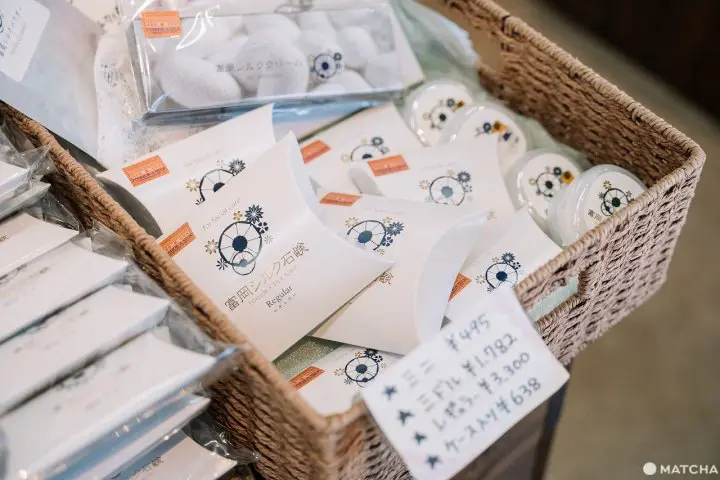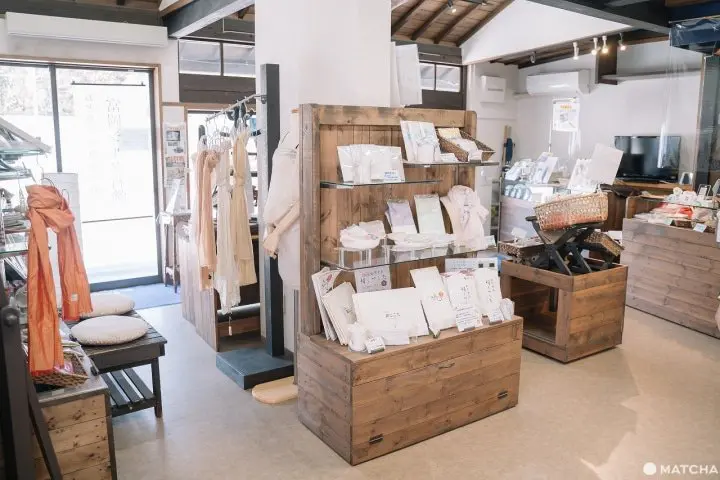5 Surprising Facts About Tomioka, a World Heritage City

Tomioka might be best-known for Tomioka Silk Mill, a World Heritage site since 2014. We introduce five lesser-known things about Tomioka, including the fact that the silk mill was the result of international collaboration and that Myogi Shrine has been a center for Shugendo ascetic practices.
Amazing Discoveries in Tomioka, a World Heritage City

Tomioka, a city in Gunma Prefecture, easily accessible from Tokyo in about two hours, might be best known for Tomioka Silk Mill, a World Heritage site. The city lies halfway up Mt. Myogi (1,104 m), a favorite destination of rock climbers.
A visit to Tomioka is a chance to learn a few fascinating facts about this region. For instance, that it was one of the first cities to welcome foreign workers in early modern Japan. Or that Mt. Myogi has been a center for Shugendo (*1) ascetic practices, and that you can actually meet here contemporary yamabushi ascetics (*2)!
*1 Shugendo... A type of ancient Japanese mountain worship combining elements from the Shinto and Buddhist faiths.
*2 Yamabushi... Followers of Shugendo asceticism. They practice isolation and rigorous training in the mountains to awaken to a deep understanding of reality.
In this article, we introduce five surprising facts about Tomioka in the hope you'll consider adding this fascinating city to your itinerary in Japan!
1. Tomioka Silk Mill Was the Fruit of International Collaboration

Tomioka Silk Mill, established in 1872, was designated a World Heritage site in 2014. Visiting here is a chance to learn about the history of Japan's industrialization and how silk production contributed to economic development in those days.
But did you know that one of the reasons why the silk mill was built here is because the local community accepted the presence of foreign staff?
In the early Meiji Period (1868-1912), the Japanese population was not used to seeing foreign nationals among them and many felt insecure about having to deal with cultural differences. The residents of Tomioka, however, replied positively to the idea of welcoming foreign workers.

The foreign staff working at Tomioka Silk Mill in its early days included the lead engineer Paul Brunat (1840-1908). He played a major role in bringing silk reeling equipment and instructors from France.
Additionally, French female trainers of the young silk reeling staff were also present from the early days of the facility. Brunat's House and the building where the female instructors were accommodated can still be seen today in the precincts of Tomioka Silk Mill.

Tomioka Silk Mill employed mainly young female workers as silk reeling staff. Many of the first employees were daughters from former samurai families that were constrained to work for a living after the fall of the Edo-period (1603-1868) military government.

The lifestyle of the female workers at Tomioka Silk Mill gathered attention for being very progressive for its time. The employees worked eight hours a day and had Sundays off along with summer and New Year holidays. Additionally, they were ensured lodging and medical care.
These convenient working conditions were introduced in order to allow the employees to focus on learning how to produce high-quality raw silk, but also because working hours had to be adjusted according to daylight at a time when there was no electric lighting.
2. Silk Is Used in Cosmetics! The Story of Kinu Kobo

Silk is still being produced in Tomioka nowadays, although on a smaller scale. Local silk products can be found at the souvenir shops in the city.
Silk Studio Kinu Kobo is a silk manufacturing company that uses silk not only for textile products but also in cosmetics. Due to its high protein content, silk is extremely gentle on the skin, keeping it moisturized and making it smoother.

Kinu Kobo developed the silk soap for facial use, an extremely popular product that will remind you about the outstanding features of silk.

At their shop located right in front of Tomioka Silk Mill, visitors can find masks, scarves, and even blankets made out of pure silk. For those who love high-quality items, Kinu Kobo is a must-visit!
3. Local Specialties Are Served in a French-Inspired Interior at Café Drôme

Café Drôme, also located in front of Tomioka Silk Mill, occupies a renovated building that dates back to 1875. The silk mill employees and visitors used to have passed by this building for almost 150 years! The dirt walls and wooden beams of the second floor have been preserved as they originally were.
The name of the cafe was inspired by Paul Brunat's place of birth, the Drôme region of France. The furniture and decorations were also brought from France; visitors from Europe will probably feel very at home in this cozy interior.

Gunma, where Tomioka is located, is well-known for the production of miso paste and wheat flour. These local specialties are an integral part of the menu offered at Café Drôme.
In addition to their appetizing savory lunch menus that taste as good as they look, their iconic Purin soko ga miso is a must-try! At the bottom of the smooth, rich pudding there is a layer of caramel mixed with miso paste. The saltiness of the miso enhances the aroma of the caramel, turning this dessert into a heavenly treat!
4. Myogi Shrine Used to Be a Temple!

Myogi Shrine, located halfway up Mt. Myogi, a sacred mountain, is famous for its magnificent architecture. The main shrine hall has been designated a National Important Cultural Property.

Originally established in 537 according to shrine chronicles, the shrine buildings have been rebuilt in the early Edo Period (1603-1868), reflecting the gorgeous architectural trends of those times.

What is less known, however, is that until the beginning of the Meiji Period (1868-1912), Myogi Shrine used to be both a Shinto shrine and a Buddhist temple! Japanese religion used to be syncretic, combining elements of Shinto and Buddhist faiths, until an imperial edict from 1868 ordered the separation of these doctrines.
Visitors to Myogi Shrine will notice this feature right at the entrance. The main gate is a somon gate typical of a temple (shrines usually have torii gates), and the name on the plate reads "Koken-in," with "in" meaning "Buddhist temple."

Since Mt. Myogi was worshipped as a sacred mountain, Myogi Shrine has been a gathering place for practitioners of Shugendo, a syncretic tradition that combined elements of Buddhist and Shinto faiths.
The entrance to the shrine office is guarded by two large masks of tengu, legendary creatures believed to be the protectors of Shugendo practitioners.

The building housing the shrine office used to accommodate members of the Imperial Family in the early days of the Meiji period (1868-1912). An impressive collection of historical items and artifacts can be viewed in this building.
5. You Can Actually Meet a Shugendo Ascetic in Tomioka!

This may seem suprising but the Shugendo tradition is far from being a matter of the past! Those who wish to become Shugendo ascetics go through special training in order to obtain their license as Shugendo practitioners.
Visitors to Tomioka may have the chance to meet Ryuka Onozeki, a contemporary Shugendo practitioner. The daughter of a temple priest, Ryuka decided in her teens that she wanted to become a yamabushi. Although she encountered opposition from family members and acquaintances, she managed to go on through her years of Shugendo training in Kyoto and obtained her yamabushi license.
After returning to her hometown Shinto-mura, a town nearby Tomioka, she became the chief priestess of Daifukuin Temple, a title inherited from her father. At the same time, she is active as a yamabushi, making sure that this spiritual tradition stays alive.

Photo provided by a Mt. Myogi climbing tour participant
Climbing Mt. Myogi up to the Dai-no-ji, the white symbol that stands for the spirit of the mountain according to the Shugendo tradition, is considered a spiritual endeavor. Visitors to Tomioka who wish to experience the Shugendo climbing tour may have the chance to receive a brief introduction to mountain asceticism given by Ryuka Onozeki.
Experience the Cultural Richness of Tomioka
Even a short visit to Tomioka is a chance to discover incredible stories hidden in the city's past.
We recommend taking part in a guided tour of Tomioka, in order to learn all the fascinating details about this historic city. Please contact the Tomioka City Tourism Association for details about available tours.
Read also
Photos by Monami I.
Sponsored by Tomioka City
MATCHA's promotional account for corporate and local government advertising. We aim to provide useful information to our readers in an enjoyable manner.































![[2026] Top 5 Strawberry Picking Spots in Tokushima, Naruto| Farms and Access Guide for January to May](https://resources.matcha-jp.com/resize/720x2000/2025/03/06-227165.webp)
![[Yamanashi/ Hokuto City] 4 Hot New Spots Opening in 2026](https://resources.matcha-jp.com/resize/720x2000/2025/12/12-252747.webp)


